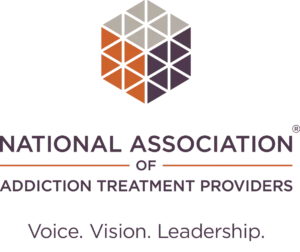

Table of Contents
What is OCD?
Obsessive compulsive disorder (OCD) is a mental health disorder that involves the destructive cycle of obsessions and compulsions. While many people will experience some form of obsessions and compulsions throughout their life, what sets OCD apart from these common behaviors is that those with OCD will experience extreme levels of anxiety and their OCD symptoms make it difficult to perform daily life activities.
Addiction vs. OCD
Addiction can look similar and be related to both compulsions and obsessions. When discussing the relationship between addiction vs compulsion, it is important to distinguish between the two.
While addiction generally describes the dependence that someone has on a particular substance or addictive behavior, compulsions are the intense urges that an individual feels towards a certain behavior. However, compulsion can influence addiction because the intense urges experienced from taking addictive substances can cause intrusive feelings.1
The relationship between addiction vs obsession reveals a strong connection. Obsessions can be ritualistic routines that are like an addiction. The main difference is that addiction is typically behavior that is performed as a mental escape.2
Obsession vs. Compulsion
With OCD, obsessions and compulsions are generally both presents. With OCD, obsessions, and compulsions go hand in hand. Because compulsions are typically behaviors that the individual uses to neutralize the obsessions, they are often present together.
What are Obsessions?
Obsessions are typically thoughts, images, and even impulses that continuously occur and can make the individual with OCD feel as though they are out of control. People struggling with OCD do not like these obsessive thoughts and find them to be disruptive to their daily life. Furthermore, individuals experiencing OCD symptoms may even understand that the thoughts they experience do not make any sense.
In addition to obsessions not making any sense, these thoughts and impulses likely make the individual feel uncomfortable because the thoughts may induce fear, disgust, doubts, and perfectionistic tendencies that interfere with their normal mental processes. These obsessions are typically serious and can cause severe anxiety.
Some of the common types of obsessions seen with those who are diagnosed with OCD include:
Contamination
Avoidance of any triggering situations or objects
Loss of control
Fear of harming others
Unwanted sexual thoughts
Religious obsessions
Sexual orientation
Contracting a physical illness or disease
Superstitious ideations3
What are Compulsions?
In addition to obsessions, those with OCD symptoms will experience compulsions. Compulsions are repetitive behaviors or thoughts that the individual with OCD will use to counteract their obsessions. Not only will these compulsive behaviors neutralize the obsessive thoughts, feelings, and impulses, but they are viewed as a temporary solution that can help that person escape the anxiety caused by the negative obsessions.
Some compulsions may also include avoiding situations that will trigger certain obsessions. However, compulsions are generally time-consuming and will get in the way of performing daily activities. While some compulsive behaviors can be ritual, not all of those with OCD display these tendencies.
Some of the common compulsions that are seen in those with OCD include:
Washing and cleaning
Checking on things repeatedly
Mental compulsions such as counting, review of events, and praying to prevent harm
Placing items or arranging them in a certain order
Seeking ways to get reassurance
Avoiding triggering situations3
OCD Symptoms
Obsession Symptoms
Obsession symptoms are typically persistent and unwanted thoughts or urges they are not only intrusive but can cause the individual extreme distress or anxiety. Even though the individual with OCD will attempt to get rid of the symptoms, they will either perform compulsive behaviors or rituals to neutralize them.
Generally, obsessions will have certain themes as well as signs and symptoms. Some of these symptoms include:
Fear of contamination
Doubting and have difficulty with uncertainty
A need to have everything orderly and symmetrical
Terrible thoughts regarding losing control and harming oneself and others
Pervasive and unwanted thoughts such as aggression, sexual, or religious topics
Avoidance of any triggering situations or objects
Increased invisible stress when something is not orderly or right4
Compulsion Symptoms
Compulsions can be identified because they are competitive behaviors that an individual will continuously perform to reduce anxiety from obsessions. Compulsion symptoms are generally triggered by one thing or another. However, compulsions are often not desirable behaviors nor are they enjoyable.
Like obsessions, compulsions will generally have a theme, and some of them may include behaviors such as:
Washing one’s hands until the skin becomes raw
Repeatedly checking and locking doors to make sure they are locked
Repeatedly checking a stove to ensure it's turned off
Counting behaviors
Repeating a prayer, word, or phrase
Always placing objects in a symmetrical or certain way4
OCD Symptoms in Children
Because many cases of OCD appear in children between the ages of 8 and 12, looking for and correctly identifying the symptoms in children can help with early diagnosis and treatment.
Some of the common OCD symptoms in children include the following:
- Irrational worries and fears
- Referring to disturbing thoughts and feelings that the child feels they cannot control
- Unusual or illogical behaviors of a child cannot explain
- Anxiety or tantrums that occur when something is out of order
- Desire to place things in a particular order
- Rituals such as circling the room before leaving
- Trouble focusing on schoolwork or homework
- Checking and rechecking
- Abnormal amounts of worry that something bad is going to happen
- Trouble making new friends and keeping friendships
- Anger when a compulsive behavior is interrupted
- Depressed mood or anxiety5
OCD and Genetics
OCD generally runs in families. Studies have shown that patients who are diagnosed with OCD have relatives who are also affected by the disorder. Researchers found that 4% to 8% of relatives usually had OCD symptoms, and as much as 20% to 40% of first-degree relatives display obsession traits.6
While the exact genetic marker of OCD is currently unknown, more recent studies have shown that genes may play an important role when OCD symptoms first emerge. For example, twin studies have indicated that childhood OCD symptoms may have a larger genetic influence than adulthood OCD symptom manifestation.
Treatment for OCD Symptoms
There are some treatments for OCD that have shown to be effective.
Medication
Because many doctors attempt to target both depression and OCD symptoms by use of medication, substances such as SRIs, or serotonin reuptake inhibitors, have been effective in the treatment of OCD. Along with medication, medical professionals will typically suggest the use of other treatments such as psychotherapy to support the individual as they learn to cope with their OCD symptoms.7
Psychotherapy
Psychotherapy, also known as talk therapy, may also be successful in treating OCD symptoms. Cognitive-behavioral therapy has also been shown to help with the treatment of OCD. Additionally, mental health professionals will often use exposure and response prevention (ERP) to expose the individual to their obsessive behaviors in a safe way. The use of these therapies can help the individual learn to cope with the anxiety they experience as a result of their symptoms.7
Self-Help Strategies
Along with the use of medication and psychotherapy, those who struggle with OCD symptoms and compulsive behaviors can employ self-help strategies to cope with the symptoms. For example, individuals with OCD can try some of the following strategies as coping mechanisms:
- Use self-help resources such as books and others that are based on cognitive behavioral therapy
- Look to peers for support
- Join OCD support groups
- Use coping mechanisms, stress management, relaxation techniques, and mindfulness
- Maintain a healthy sleep schedule
- Perform daily physical activity
- Eat a healthy diet8
While the main treatments currently used include medication and types of psychological intervention, self-help strategies and brain mapping may be the future of OCD treatment.
Brain Mapping
Brain mapping is a promising new technique that can help individuals who suffer from mental disorders manage their symptoms and even eliminate them. With brain mapping, those with OCD may be able to better regulate their brains and manage symptoms.
What is Brain Mapping?
Brain mapping helps scientists and researchers identify which areas of the brain are not functioning in the typical way. By using computer technology, scientists see full images of the brain so that they can identify how to stabilize and regulate brain functions to improve cognitive, attention, mood, anxiety, and sleep behaviors.9
How Can Brain Mapping Help in OCD Treatment?
Neurofeedback Therapy
When studying clients that struggle with OCD, researchers have noticed that there are particularly strong emotional reactions in the brain. By using neurofeedback, scientists can train the areas of the brain that are associated with controlling emotions to adjust to certain patterns.
Neurofeedback can help reduce overactive brain waves so that individuals who struggle with these intense responses can maintain control of their obsessions and compulsions. With direct feedback, the brain can learn to better regulate itself, and the nervous system can be trained to calm itself during times of extreme stress and anxiety such as with OCD.
Benefits of Neurofeedback for OCD
There are numerous benefits for neurofeedback for OCD. For example, individuals who complete neurofeedback training will experience a decrease in exaggerated emotional responses and may even eliminate OCD symptoms altogether. Additionally, this type of treatment has no known side effects, and it is a promising treatment type for those with OCD and compulsive behaviors.
Resources
- https://www.verywellmind.com/the-difference-between-an-addiction-and-a-compulsion-22240
- https://psychcentral.com/pro/exhausted-woman/2015/04/the-difference-between-an-obsession-and-an-addiction#1
- https://iocdf.org/about-ocd/
- https://www.mayoclinic.org/diseases-conditions/obsessive-compulsive-disorder/symptoms-causes/syc-20354432
- https://drroseann.com/ocd-and-neurofeedback/
- https://www.ncbi.nlm.nih.gov/pmc/articles/PMC6343406/
- https://iocdf.org/about-ocd/ocd-treatment/meds/
- https://www.mind.org.uk/information-support/types-of-mental-health-problems/obsessive-compulsive-disorder-ocd/self-care-for-ocd/
- https://www.centerforbrain.com/how-brain-mapping-helps-target-anxiety-depression-and-adhd-with-neurofeedback/
- https://pubmed.ncbi.nlm.nih.gov/15237084/









